The 19 best Twin Peaks moments to watch with damn fine cherry pie
9. Philip Jeffries returns
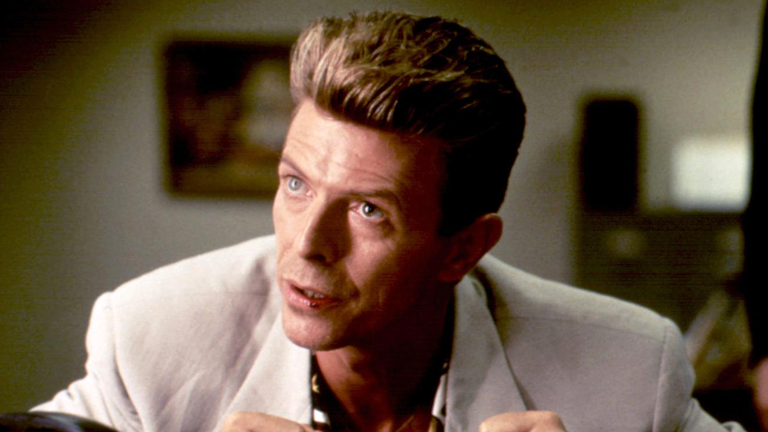
The movie: Fire Walk With Me
The moment: Agent Philip Jeffries (played by music legend David Bowie) staggers into the Philadelphia FBI field office. He looks distressed, ranting about someone named Judy, and describes a meeting of Black Lodge spirits including BOB and the Man From Another Place. Gordon Cole calls him ‘the long lost Philip Jeffries’ and asks where the hell he’s been. It’s implied that the agent has been lost in the Black Lodge, similar to how Cooper was at the end of season 2, and has somehow managed to escape. He also seems to know the fate that will befall Cooper, pointing angrily at him and asking “Who do you think this is there?” Then he vanishes without a trace.
Why it’s damn fine: This is one of the creepiest moments in all of Twin Peaks. Images of the Lodge spirits’ meeting drifts in and out of the scene as Jeffries cryptically rants, giving it the woozy, surreal feel of a nightmare. There are clues in the show and film suggesting time in the Black Lodge is nonlinear, and there’s something wonderfully eerie about Jeffries knowing about Cooper being possessed by BOB long before it happens. The disturbing imagery and dreamlike atmosphere make this one of Fire Walk With Me’s best scenes, and Bowie’s bad American accent only adds to its weirdness.
08. The experiment
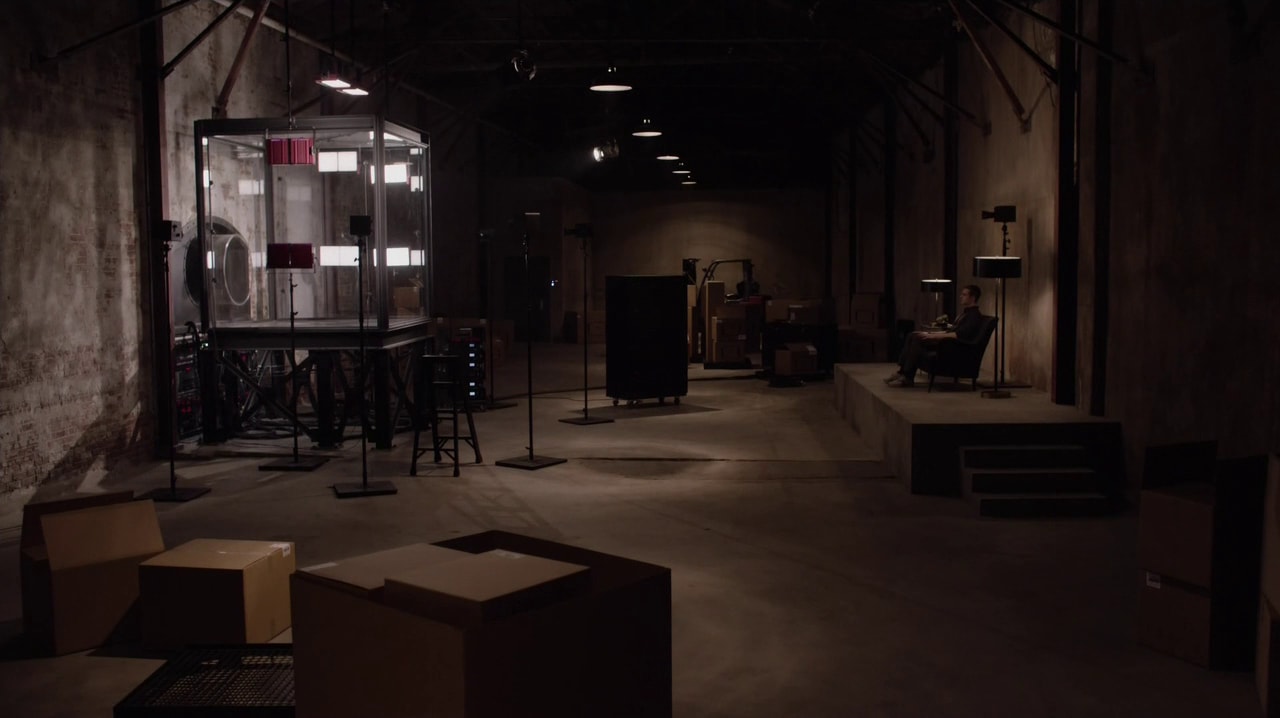
The episode: season 3, part 1
The moment: The first episode of The Return set the mystery in motion with a series of bizarre, unexplained events, including the glass box experiment. In New York City a man is being paid to stare at a glass box, replacing the SD cards in a series of cameras pointed at it when they fill up. A mind-numbing job, given to him by some mysterious billionaire who we later learn is Evil Coop. And a job that ends in tragedy. A woman visits the man and they have sex, and as they do we see the shadowy figure of Judy emerge in the box, who smashes the glass and proceeds to tear their heads off. It’s a horrific scene, and our first glimpse of Judy, long before we knew that was ‘her’ name.
Why it’s damn fine: No one was expecting an entire series of cherry pie references and cute callbacks to the original series in The Return, but this scene was our first clue that Lynch and Frost were taking the third season in a wild new direction. The glass box itself is wonderfully creepy, thanks to the long, quiet, lingering shots of it, and the blank expression of the man staring at it. This is one of the best examples of Lynch using drawn-out shots, holding the camera just a little too long, to create a powerful feeling of dread. And the brief look we get at the entity Judy is wonderfully unsettling.
7. Cooper arrives in Twin Peaks
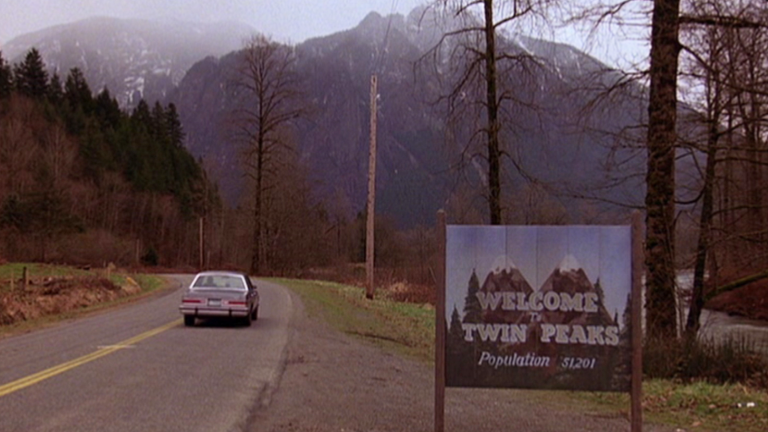
The episode: season 1, episode 1 - Northwest Passage
Bringing all the latest movie news, features, and reviews to your inbox
The moment: Special Agent Dale Cooper drives to the town of Twin Peaks to investigate the murder of Laura Palmer, speaking to someone named Diane on his dictaphone. We never see this character, and theories range from her being a secretary at the Philadelphia field office, to being a figment of his imagination. He describes his surroundings (“I’ve never seen so many trees in my life!”), talks about his lunch (“Tuna sandwich on whole wheat, slice of cherry pie, and a cup of coffee.”), then outlines his desire for a clean, reasonably priced hotel. The scene ends with him driving past the iconic town sign as the titular twin peaks loom in the distance, shrouded in fog.
Why it’s damn fine: This is our introduction to Cooper, and the moment we instantly fell in love with his eccentric charm. FBI agents in fiction are usually sullen, professional types who’d rather be somewhere else, but Cooper is enamoured by the Pacific Northwest and full of enthusiasm. He has an endearing eagerness, and the dictaphone is a clever way of giving you an insight into how he thinks. Rewatching the show, knowing what’s going to happen to him in the final episode, makes this scene bittersweet. It’s a shame we didn’t get to see more of the old Cooper in season 3.
6. Laura's murder

The movie: Fire Walk With Me
The moment: Leland Palmer, possessed by BOB, kidnaps his daughter Laura and her friend Ronette Pulaski, taking them to an old train carriage deep in the woods. Ronette manages to escape with a little help from the one-armed man, but Laura isn’t so lucky. She realises BOB and her father are the same person as he kills her, setting in motion the events of Twin Peaks.
Why it’s damn fine: Not an easy scene to watch, but an incredibly powerful one. Laura’s murder is something we hear discussed constantly for two seasons, but never see. Which makes the moment at the end of Fire Walk With Me where we finally experience it all the more haunting. Rather than use a piece of music by composer Angelo Badalamenti as usual, Luigi Cherubini’s Requiem in C Minor provides the soundtrack for the scene. The dramatic music and the shocking imagery combine to create a scene that’s deeply disturbing, but hard to look away from. No one directs horror quite like David Lynch.
5. Albert's path
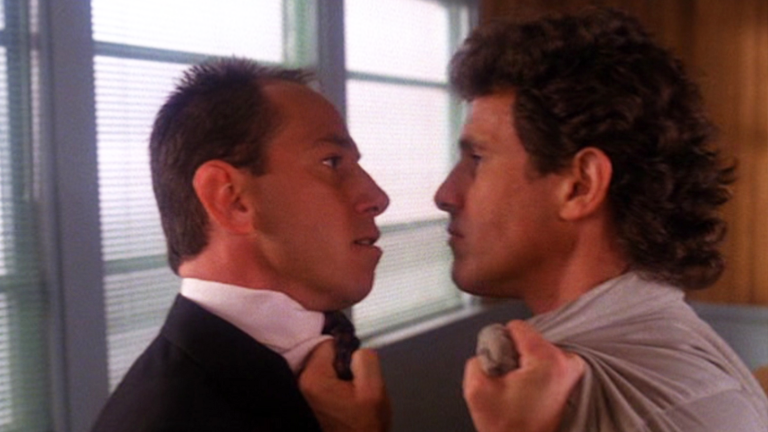
The episode: season 2, episode 3 - The Man Behind the Glass
The moment: Sarcastic FBI agent Albert Rosenfield, who is unimpressed by the rural charm of Twin Peaks, frequently butts heads with Sheriff Truman. After suggesting Harry “practice walking without dragging his knuckles”, the Sheriff snaps and grabs Albert by the collar, threatening him. But in a moment no one saw coming, he suddenly decides to describe the philosophy he lives his life by: rejecting violence and following in the footsteps of Gandhi and Martin Luther King. “The foundation of such a method is love,” he says. “I love you Sheriff Truman.” He puts his sunglasses on and exits the room, leaving Harry stunned. “Albert’s path is a strange and difficult one.” says Cooper.
Why it’s damn fine: We could have chosen any number of Albert Rosenfield scenes. Miguel Ferrer was perfectly cast as the mean-spirited, ill-mannered forensics expert. But we went for this one, because it’s another example of Twin Peaks mischievously playing with your expectations. Rosenfield goes from being almost comically cruel, to being a character with intriguing hidden depths. You suddenly become aware that his aggressive demeanour is a product of some internal struggle, and the unlikely friendship he develops with Truman after his heartfelt confession is wonderfully unexpected.
04. The birth of BOB
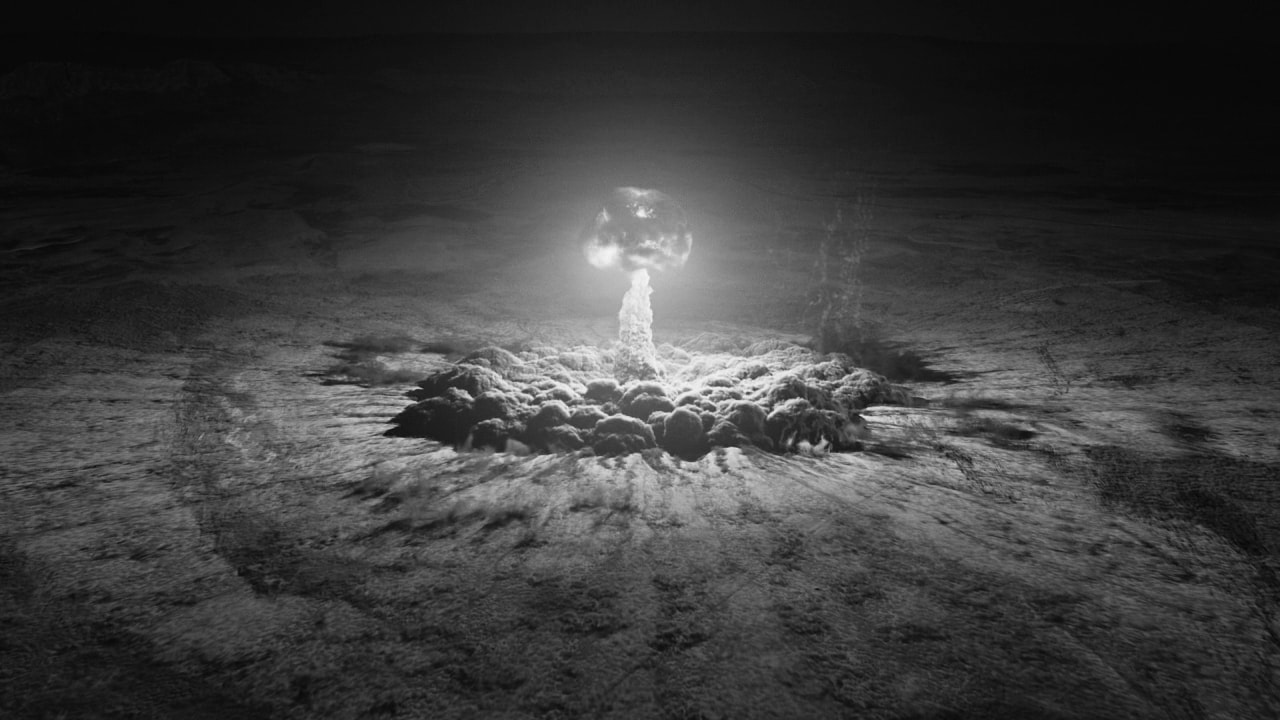
The episode: season 3, part 8
The moment: In the deserts of New Mexico on July 16, 1945, the first atomic bomb is detonated by the United States. A moment that changed the world, and if Twin Peaks is to be believed, gave birth to the entity we know as BOB. Part 8 of The Return is full of striking, surreal imagery, the best of which is when the camera moves slowly towards the mushroom cloud of the blast, then deep into it, revealing a terrifying, abstract landscape of colliding atoms and nuclear fire. Then we see the strange, eyeless creature named Judy—described by Gordon Cole as an extreme negative force—regurgitating a fleshy orb bearing the demented, staring face of our favourite demon BOB.
Why it’s damn fine: This entire episode is like being dragged into one of David Lynch’s dark, abstract paintings, and this scene is a masterpiece. The use of Krzysztof Penderecki’s stark, haunting ‘Threnody to the Victims of Hiroshima’ on the soundtrack only adds to its emotional heft, and the psychedelic landscape we see when we’re pulled through the atomic blast is absolutely mesmerising. But as well as being a feast for the senses, this scene also fills in some important Twin Peaks backstory, revealing that the creation of the atomic bomb was responsible for either giving birth to BOB, or creating enough negative energy to invite him into our world.
3. The killer is revealed
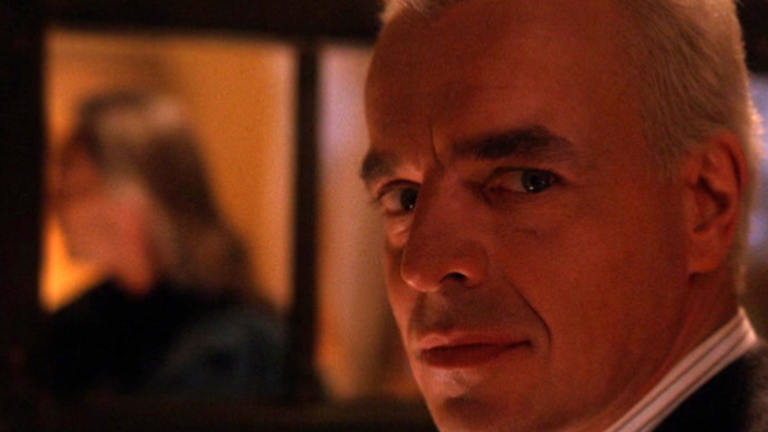
The episode: season 2, episode 7 - Lonely Souls
The moment: The Giant appears on stage at the Roadhouse and warns Cooper that “it is happening again.” In the Palmer household Leland is smiling at himself in the mirror and we cut to his reflection and see BOB staring back. Maddy comes downstairs complaining about a burning smell—an odour associated with spirits of the Black Lodge—and Leland grabs her. As they struggle he intermittently appears as BOB, confirming that they’re one and the same. He brutally murders her, and although we don’t know for certain he killed his daughter yet, it’s obvious he’s the culprit.
Why it’s damn fine: Some argue that this revelation resulted in declining interest in the show and its eventual cancellation. Whether that’s true or not, it’s still an incredible moment, and the series’ most shocking reveal. There was always something off about Leland, but most never suspected him as the killer. His odd behaviour and bouts of public weeping (and dancing) were, we thought, caused by grief. And while that is partly true—the old Leland still existed in his mind, tortured by what BOB made him do—the truth is much darker than anyone could have anticipated. David Lynch directed this scene brilliantly, even if he later regretted revealing the identity of the killer.
2. Into the Black Lodge
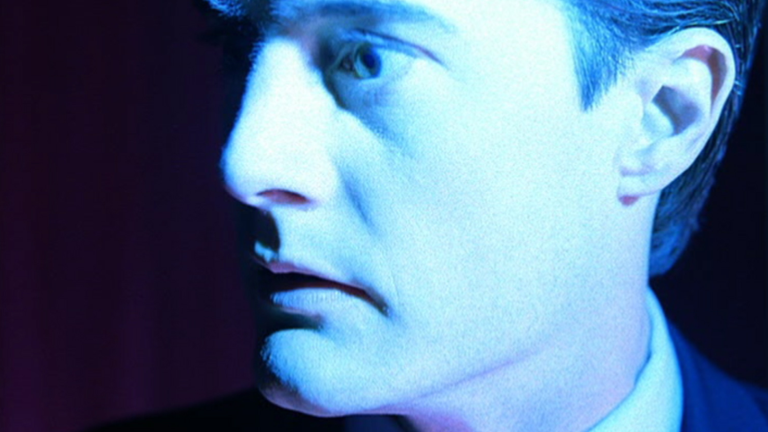
The episode: season 2, episode 22 - Beyond Life and Death
The moment: Windom Earle takes Annie into the Black Lodge, and Cooper gives chase. Entering through the portal in Glastonbury Grove, he finds himself in the red room from his dream in episode 3. What follows is a series of bizarre events designed to break his spirit. His beloved coffee turns to black sludge. He’s terrorised by frightening doppelgängers of Laura, Leland, and the Man From Another Place. And he sees apparitions of Annie and Caroline, two women he loved, and who Windom Earle either murdered or tried to murder. The scene ends with Cooper fleeing hopelessly in terror from his own doppelgänger and BOB’s smiling face. The Lodge has beaten Cooper, leading to his possession and that maddening season 2 cliffhanger.
Why it’s damn fine: We see glimpses of the Black Lodge in dreams, but this is the first time Cooper actually visits. And it’s as scary as Hawk warned it would be. It’s the show’s heart of darkness, home to BOB and the other spirits, and its influence is so strong that even the brave, fearless Cooper is no match for it. The long scene in the Lodge, directed by David Lynch, is visually stunning and incredibly unsettling. And the eerie performance of the song ‘Sycamore Trees’, sung by jazz singer Jimmy Scott, adds to the creepy ambience.
1. Cooper's dream

The episode: season 1, episode 3 - Zen, or the Skill to Catch a Killer
The moment: Cooper falls asleep in his room at the Great Northern and starts to dream. A one-armed man reads a sinister poem which includes the line “fire walk with me”. BOB appears and says he will kill again. And Cooper talks to a dwarf in a red suit, who says a doppelgänger of Laura Palmer is his cousin. ‘Laura’ leans over and whispers something inaudible in Cooper’s ear, then the dwarf begins to dance strangely to dreamy jazz. Cooper suddenly wakes up, calls Harry and says he knows who killed Laura Palmer, then clicks his fingers in time with the music as the end credits roll.
Why it’s damn fine: This must have blown the minds of people who watched Twin Peaks when it originally aired. Up until this point the show is a murder mystery with no supernatural leanings. Then, suddenly, we’re watching a dancing dwarf talking backwards. Lynch said he had a vision of the red room while leaning on the hood of a hot car. But it wasn’t until season 2 that Mark Frost wrote the mythology of the Black Lodge around the sequence to give it context. This is easily the most famous scene in the whole of Twin Peaks, establishing that it’s more than just a melodramatic soap opera. Cooper immediately forgets what Laura’s double told him the next day, but the clues in his dream ultimately lead him to cracking the case.


